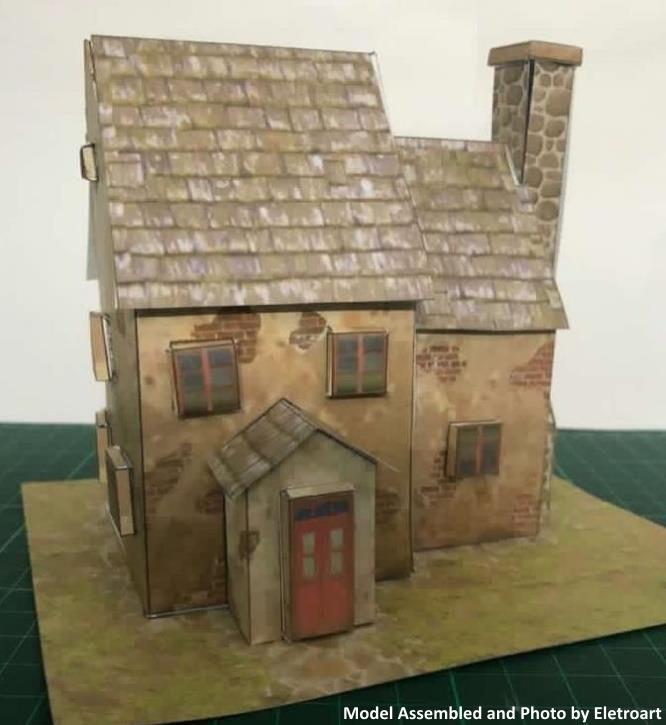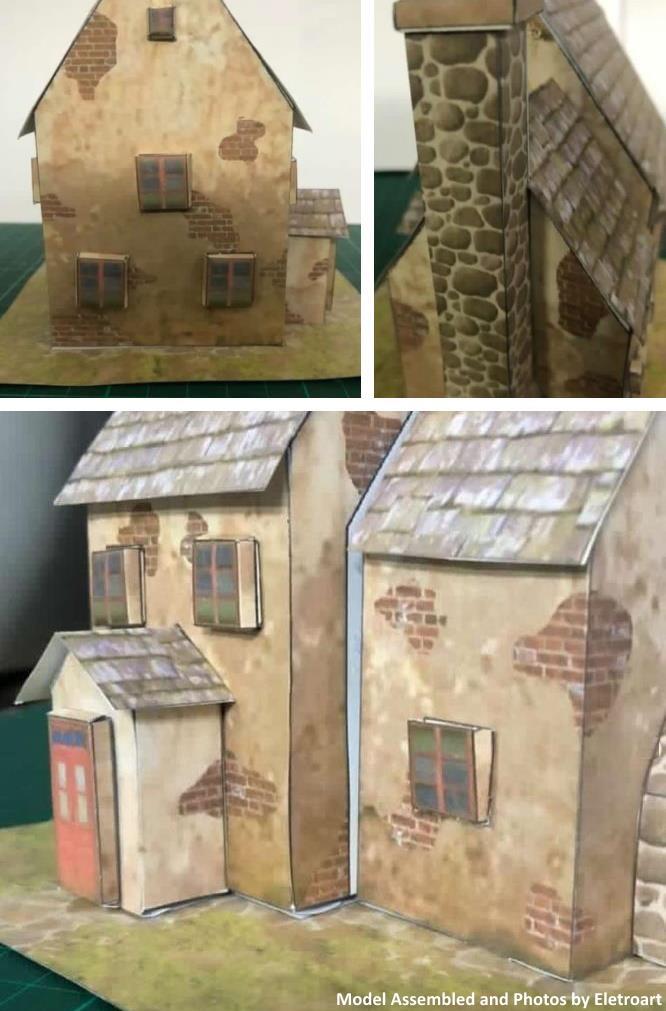Electroart is a talented papercraft modeler who is only 11 years old and it was he who assembled this Papermau original papercraft, the House of the Second World War located somewhere in Europe.
Eletroart kindly sent me some pictures of his beautiful work and I took the liberty of reposting them here on the blog. He said this was his first colored papercraft. I thought it was very good, and you, what did you think?
If you want to build your own WW2`s Style House Somewhere In Europe, the link to download the templates is right below. Have fun!
Electroart é um talentoso modelista de apenas 11 anos de idade e foi ele quem montou este papercraft original do Papermau, a Casa da Segunda Grande Guerra situada em algum lugar na Europa.
Eletroart gentilmente enviou-me algumas fotos de seu belo trabalho e eu tomei a liberdade de repostá-las aqui no blog. Ele disse que esse foi seu primeiro papercraft colorido. Eu achei que ficou muito bom, e você, o que achou?
Se você quiser montar sua própria Casa da Segunda Grande Guerra, o link para baixar os templates esá logo abaixo. Boa diversão!
About the Ephemeral Museum:
I "am in the paper modeling" since 2005, although I've had contact with paper models from my childhood in the 1970s, via magazines that were sold sporadically in newsagents. I remember magazines with houses to build and dioramas/playsets of airports, western forts, nativity scenes and the like. With the advent of the internet what happened was simply a revival of the papercraft hobby for me and many other people of my generation. Today I am opening a new session here on the blog, the Ephemeral Museum , which is a place where I will show some of the models that I built all these years. I would also like this to be a space where all modelers friends could show their work, so if anyone wants to participate in this "museum", just send photos of your work and a few words, if you want, to the e-mail:
mautherous@gmail.com
All who submit their work will be published, without exceptions.
Eu "estou no papelmodelismo" desde 2005, embora eu já tivesse contato com modelos de papel desde minha infância, nos anos 1970, via revistas que eram vendidas esporadicamente em bancas de jornal. Lembro que haviam revistas com casas para montar e dioramas/playsets de aeroportos, fortes-apache, presépios e coisas do tipo. Com o advento da internet o que houve foi simplesmente um renascimento do hobby do papelmodelismo para mim e muitas outras pessoas de minha geração. Hoje eu estou inaugurando uma nova sessão aqui no blog, o Ephemeral Museum, que é um lugar aonde irei mostrar alguns dos modelos que eu construí em todos estes anos. Também gostaria que esse fosse um espaço aonde todos os amigos modelistas pudessem mostrar seus trabalhos, sendo assim, se alguém quiser participar deste "museu", basta mandar fotos de seu trabalho e algumas palavras para o e-mail abaixo:
mautherous@gmail.com
Todos que enviarem seus trabalhos serão publicados, sem exceções.




























